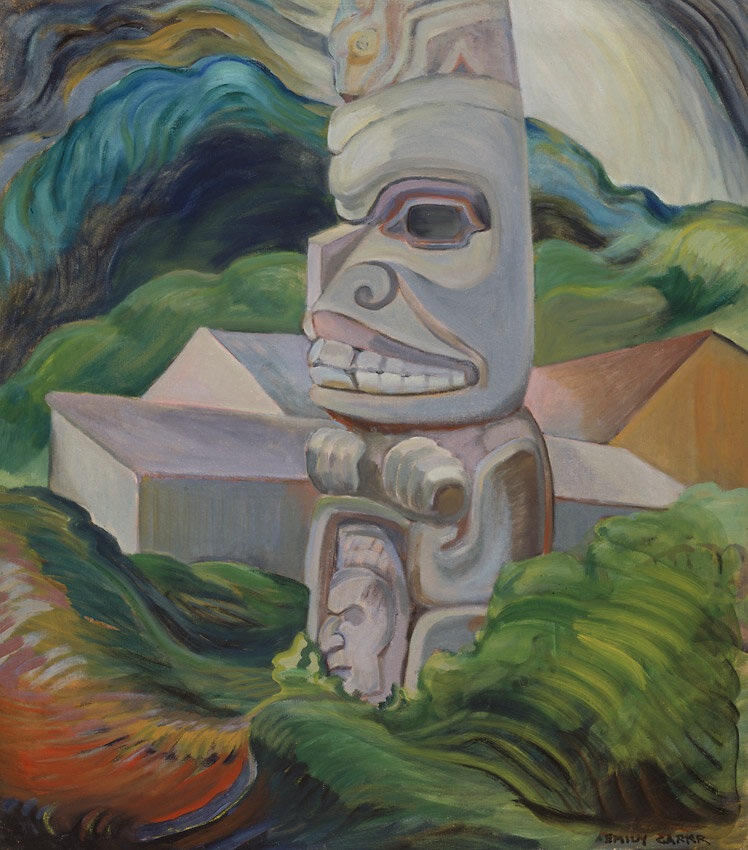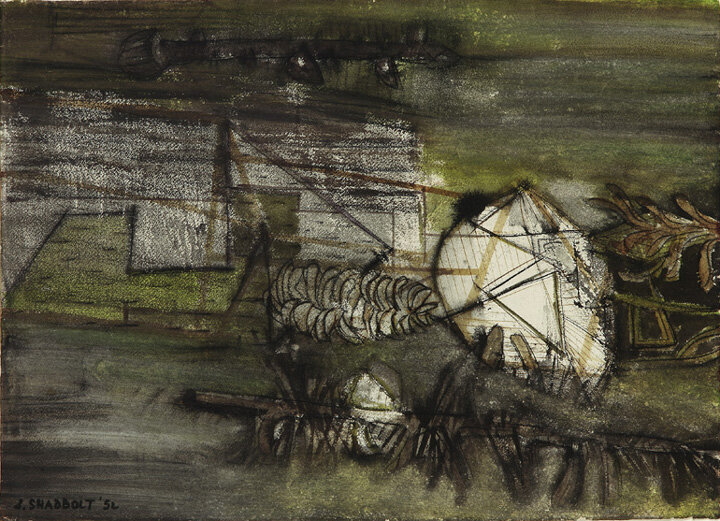TWO VISIONS
Emily Carr
Jack Shadbolt
Central Gallery
January 23 to March 21, 2010
Two Visions: Emily Carr and Jack Shadbolt examines the important relationship between two of British Columbia’s most celebrated artists. Carr’s paintings and sketches of west coast forests and First Nations communities have shaped BC’s visual identity and continue to be deeply influential for artists in the region. Jack Shadbolt, who came to Canada as a young child, was among the artists inspired by Carr. He responded enthusiastically to British Columbia’s natural setting, which he rendered according to the modernist trends of twentieth century art. By examining points of similarity and difference between the two artists, Two Visions reveals Shadbolt’s struggle to find a unique artistic voice, while acknowledging Carr’s influential role in the art of this province. The exhibition also celebrates Shadbolt’s significant contribution to Canadian painting on the 100th anniversary of his birth.
Emily Carr’s paintings and drawings define British Columbia’s visual identity by breaking with conventions of nineteenth century Canadian painting. Carr’s work addresses First Nations subject matter and the natural landscape of British Columbia with vivid colour, dynamic brushstrokes and painterly techniques, drawing from a range of influences including the Group of Seven, Fauvism, Post Impressionism, Cubism and Abstraction. Carr first encountered one of her primary subjects, totems of British Columbia’s First Nations, while visiting First Nations villages along the Skeena River and on the Queen Charlotte Islands (Haida Gwaii). In 1928 Carr embarked on an extensive sketching trip to the coastal regions of British Columbia. In these sketches she left behind her early documentary inclinations and began to focus on the emotional and spiritual content she found in totemic carvings. Carr relied on these early sketches and memories to produce new paintings in the 1940s, when frail health restricted her ability to travel. Carr’s charcoal drawings of British Columbia were greatly influential for Jack Shadbolt, who described himself as feeling “overwhelmed” when looking at them. In Carr’s charcoal drawings we see her develop her artistic methodologies that appear in her later paintings, particularly her exploration of the forest as a dark and powerful source of hidden secrets.
Jack Shadbolt studied with Frederick Varley and Charles H. Scott at the Vancouver School of Decorative and Applied Arts. These artists had a great impact on his early work. Shadbolt’s images of First Nations culture and the British Columbia landscape also connect his practice to Emily Carr, but his modernist style places him within an international context. Travel was crucial to Shadbolt’s practice. According to curator Scott Watson, a 1956 journey to southern France had a profound effect on Shadbolt’s artistic development, particularly in terms of his use of vibrant colour. The continental lifestyle proved to be very different from his Canadian upbringing and provided the artist with a fresh perspective on painting the landscape, which he began to treat with hedonistic undertones. In the 1970s, Shadbolt’s work continued to explore ritual, decoration and sexuality. During this decade Shadbolt began to re-evaluate the legacy of Emily Carr, concluding that he must come to terms with Carr’s influence.
Organized by the Vancouver Art Gallery
Generously sponsored by Kamloops Daily News, Radio NL
Emily Carr
A Skidegate Beaver Pole, 1941-1942
oil on canvas
Collection of the Vancouver Art Gallery, Emily Carr Trust.
Photo: Trevor Mills, Vancouver Art Gallery







